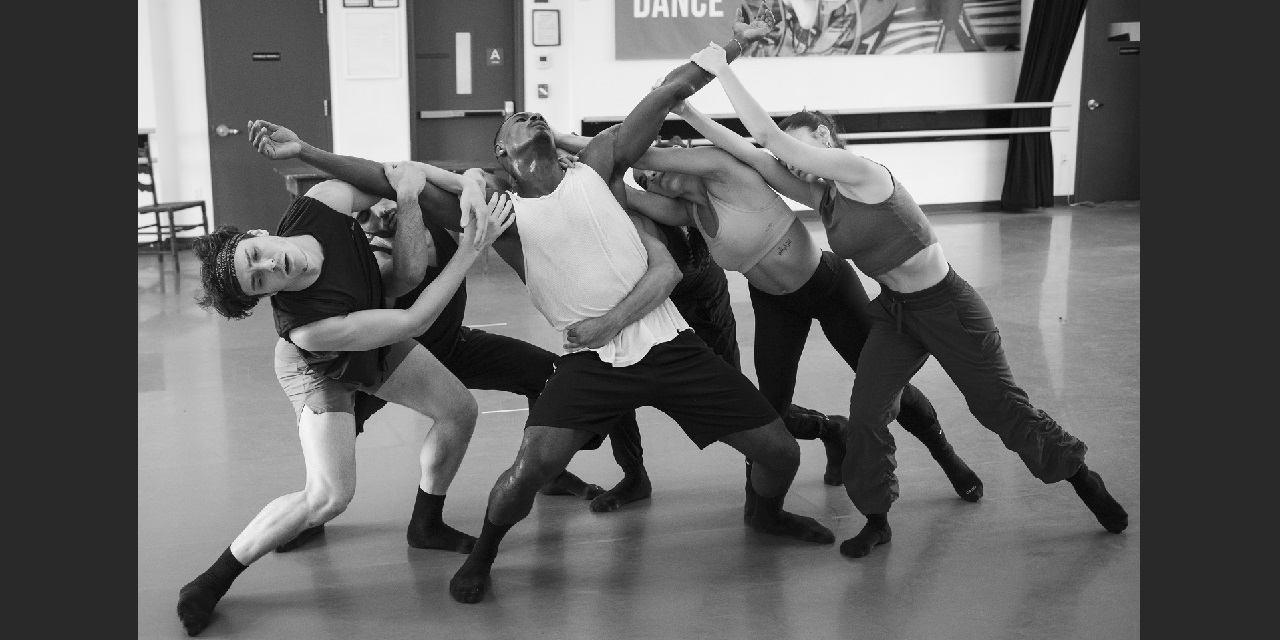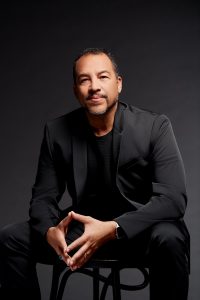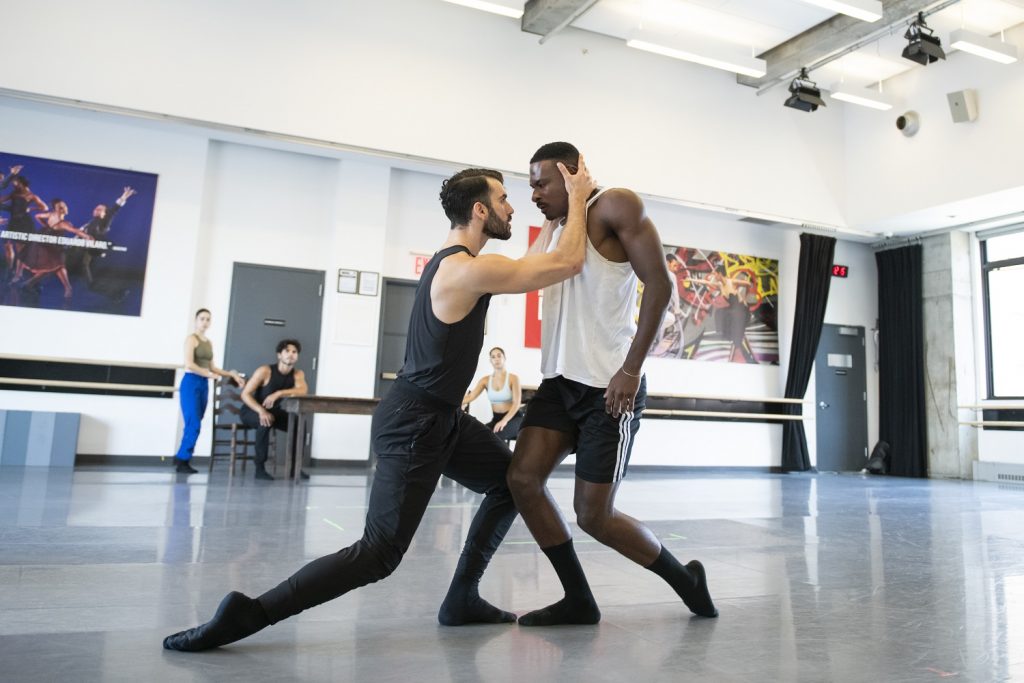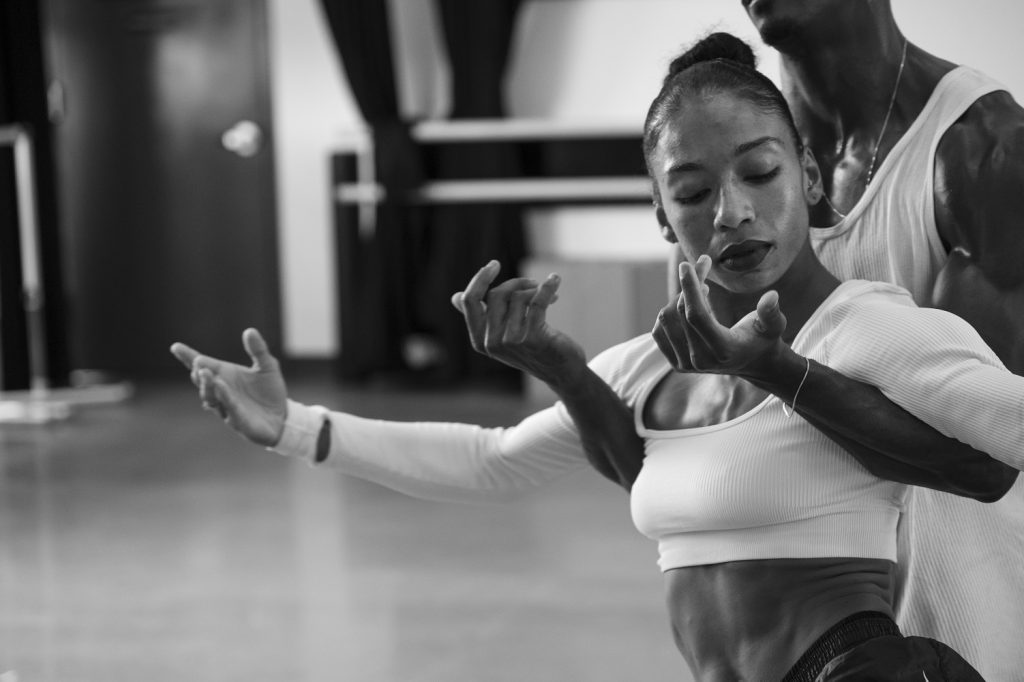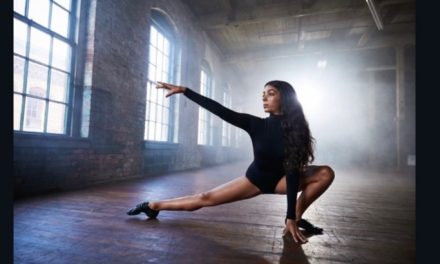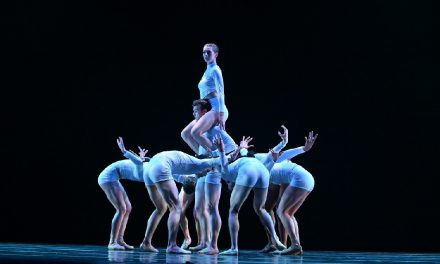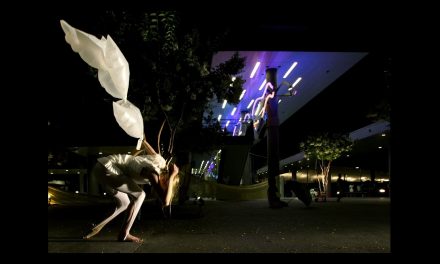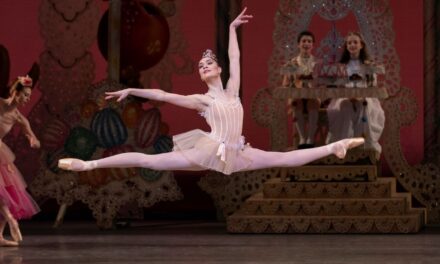The award-winning Ballet Hispánico (BH) will premiere Buscando a Juan, directed and choreographed by the pre-eminent Eduardo Vilaro, Artistic Director and CEO on Thursday, July 13 through Saturday, July 15th at New York’s Metropolitan Museum of Art. The new exhibit celebrates the life and art of 17th Century Afro-Hispanic artist, Juan de Pareja, presented by one of the most important Latinx companies today.
I was fortunate to catch Vilaro after rehearsals for Buscando a Juan and was looking forward to his insights into the history and process of developing such an ambitious work. In his gracious and generous way, he shared some of his thoughts on his new work along with his delightful metaphors.
JD: How are you Eduardo? I was so pleased to hear you are doing what looks to be an intriguing new piece. Please fill me in.
EV: I’m great, thank you. And yes, I just did a run-through of Buscando a Juan and I’m very happy with it. This is a site specific work for the Met Museum but is something I’m going to put on the stage after this. So it’s been a wonderful time for me to develop the process to ideate, to create and really see where this can go.
JD: Wonderful! So I have a few questions about this incredible subject. The first is what specifically about Juan de Pareja inspired you to do Buscando a Juan?
EV: Yes, well what really excites me is that he is an Afro-Spanish man. And people forget that Spain is not just Eurocentric. There has been so much history and intersections of culture for Spain, and I always love turning on the lights in a room. it’s very important for me, because it’s very important for who I am as a Latino man…an Afro-Cuban man also, and here was a man who was freed and worked under this major figure Diego Velázquez. And so there is such mystery around him. There are so many stories, a biography and many books about him. They’re still not based on actual fact. We know because of his “freed papers” that he was freed at one point. But there are aspects of what I call the mixture, because of colonization and slavery. The layers interest me because that’s who we are as Latinx people, very layered. That’s what we are as people period. So when we open those channels of people understanding we’re all from many places we’re not just in a box of “I’m American” or “I’m European” there’s so much more and it opens historical windows. It’s important for me. So the idea of Spain…Spain had Malaga, Sevilla, very diverse, Moors, Africans, Jewish communities, Christians….Christianity, there was so much going on there that is a precursor to how we see ourselves as freed people in colonized worlds, I just thought I’m not going to seek an answer. I’m going to try to discover. Take this man off of the painting and give it some context. And the beautiful thing about dance is that you can build context from imagery.
JD: Yes, that’s right.
EV: And so in this work, I really explored a few themes, first, because I’m a good old Catholic boy, or grew up a Catholic boy. The oppression of the Catholicism is inherent in this piece, both in the use of the music, and also just the themes. There are nobles, there are seraphim, there’s Juan, there’s Diego Velasquez, and then there’s Jesus. Who’s representing that? For me it’s a female who’s representing that. So I’m just like turning things upside down. Why a female? Because in Cuba, and in most places where slaves landed in Latin America we had to syncretize our African religions with Catholicism. So there is always a duality. We were praying to the Madonna, but actually we were praying to the Goddess of Love and hiding our two selves. So the idea of hiding your true self is also part of who Juan was, you know. There is so much connective tissue to some of these themes that I’m playing with.
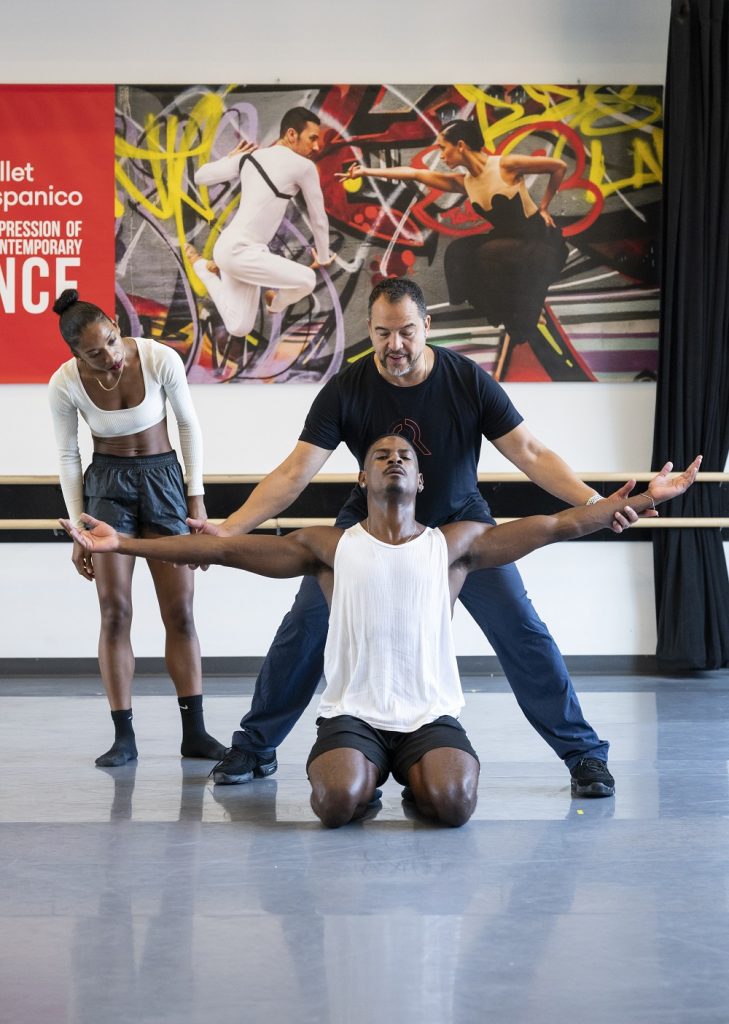
Ballet Hispánico – Eduardo Vilaro with Company dancers Gabrielle Spravuve Leonardo Brito in rehearsal for “Buscando a Juan” – Photo by Paula Lobo
JD: It’s fascinating. I was wondering…how did you decide on this complicated history? I’m beginning to get the underpinnings of that perhaps because of your heritage, but also you’re talking very much like an historian. Was that at all in your per-view when you went to school?
EV: I’m a history geek. I love history, and because I’ve had to go through my process of feeling like I belong… because I was an immigrant… I also did research. I mean, throughout my career I visited Brazil, there are many projects that I went into that was about R&D [research and development], and really understanding the social, economic, and religious factors of post-colonialism.
JD: Yes, it comes so deeply from you. And he is such a fascinating character to explore. So what kind of groundwork do you have to set up to even begin working on this process?EV: Well, first of all, get very involved with the curators of the exhibit. So One of them, Vanessa Valdez, who works at the Schomburg Center, here in Harlem, was very important, because she also writes about historical knowledge and writers who use Latin and African context in order to see themselves then do their writing. She just came last week to see the work. I was very pleased by her reaction. She said, “You know you just took him off the page and made him live.” And I said…Well, that’s what happens with dance, we’re multi-dimensional. So I did a lot of talking with she and the other curators. I did some of my own reading, the biography, some other books, their catalog is fantastic. So I started choosing visuals. I centered the work on his famous painting which is “The Calling of St. Matthew.” He decided to place himself in the painting. He did a self-portrait. Very interesting, he is book-ending Christ on our right and him on our left. And then there is these people sitting at a table, almost like the disciples. So that came into play as well. It’s a lot of fun. I’ve been like a kid in a candy store.
JD: You mentioned the music, I could not find anything about the music you’ve decided to use. Can you tell me more about that?
EV: I can’t wait to tell you about the music. So, Osvaldo Golijov is an Argentinian Jewish composer, who is amazing, and created this incredible piece. He did a Mass for St. Matthew and uses exactly what I wanted to do, the layering… His musical choices are soundscapes and, at the same time, Afro-Spanish music in very different forms… and I even end it with a Kadish which is beautiful, as a prayer. It is just remarkable. But just to say that there is so much to who we are, to who this man was. So the music had to be layered. I couldn’t use baroque music because baroque music speaks to a certain Eurocentric focus. It needed to be more of a mixture…It’s just beautiful music.
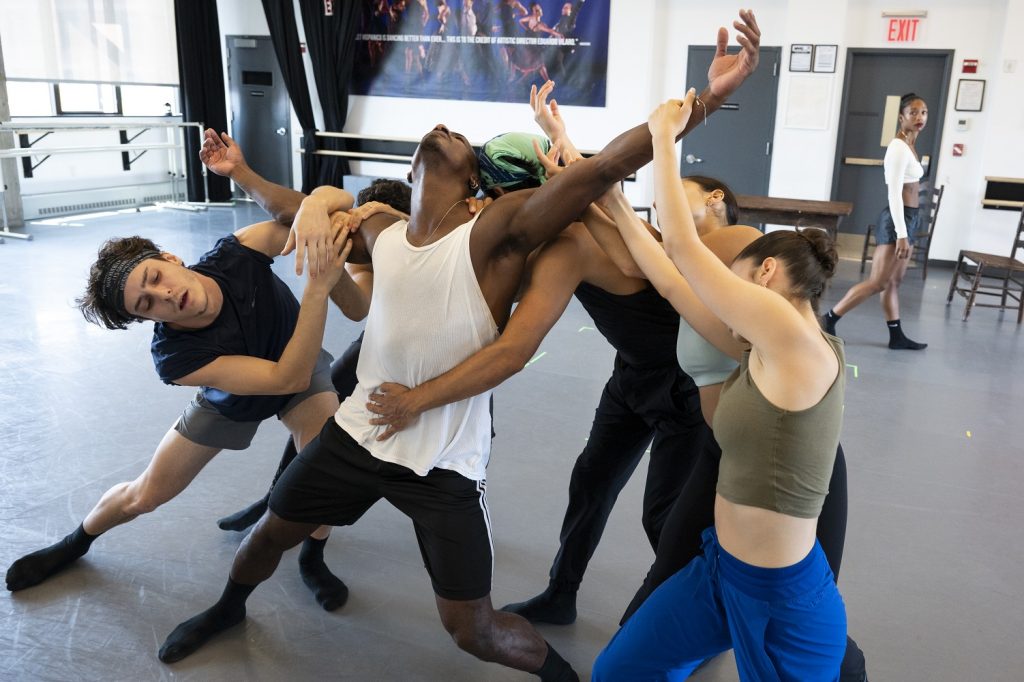
Ballet Hispánico – Company Dancers l-r: Dylan Dias McIntyre, Leonardo Brito, Fatima Andere, Amanda del Valle – Photo by Paula Lobo
JD: I can’t wait to see it on stage if and when you do that, or I may have to go to New York to see it.
EV: Yes, I plan to put it up. It’s really remarkable how this has given me a site for putting it on a proscenium stage.
JD: How does showing your work at the Metropolitan Museum provide inspiration or challenges? Have you had rehearsals on the floor?
EV: Not yet. We start rehearsals next week. I have been preparing for the challenges, because I know the space. For the shoes, we’re probably going to use sox. It’s a marble floor and you can still grip. Shoes you can still get stuck a little bit because that floor is used for many people walking on it and our dancers are really dancing…not just walking. There’s the Afro-Caribbean movement, because that’s who I am, along with contemporary movement.
JD: Jumping?
EV: If there’s one thing that there will not be…is jumping.
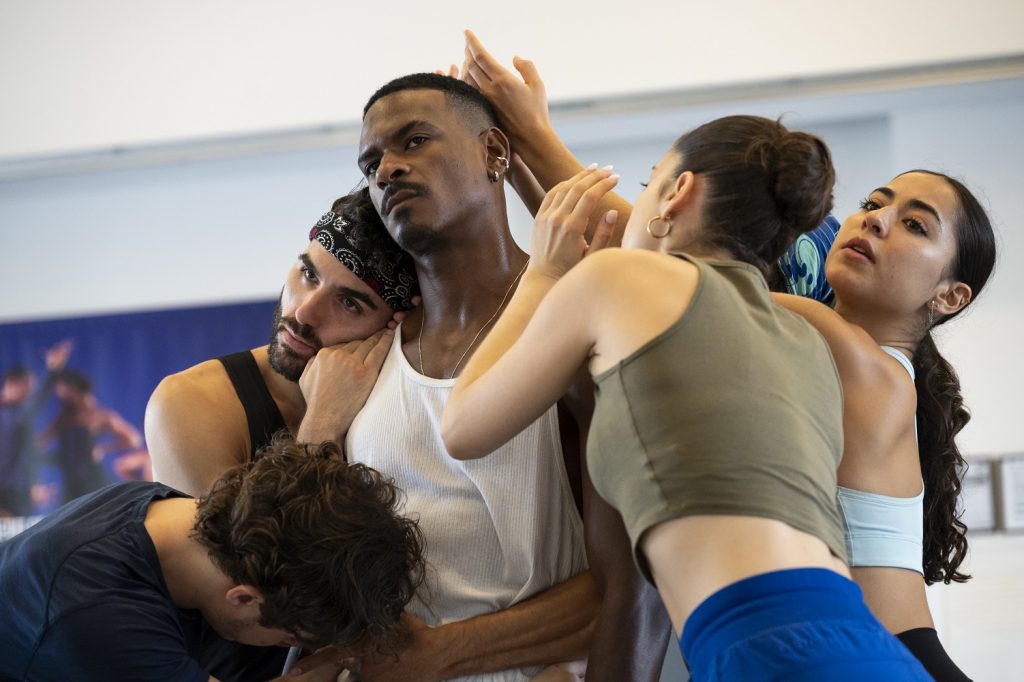
Ballet Hispánico – Company Dancers l-r: Antonio Cangiano, Leonardo Brito, Amanda del Valle, Fatima Andere – Photo by Paula Lobo
JD: Laughing…I just worry about the dancer’s feet, legs, and back.
EV: I do to. So it was very important for me to be very careful.
JD: And location?
EV: As for the location, I situated it in the middle of this beautiful resting area that’s actually in front before you get to the exhibit. It’s in the round. There’s a sixteenth century fountain in the middle. It’s so gorgeous, perfect! I’ve added a table and some chairs because there’s still a relationship to that painting. And so we’re going to have to work with light and sound but there is no lighting. I want natural lighting, and the audience is going to be able to have different perspectives. You can see it from above looking down, or you could see it on the sides, or you can see it from the front. It’s truly in the round.
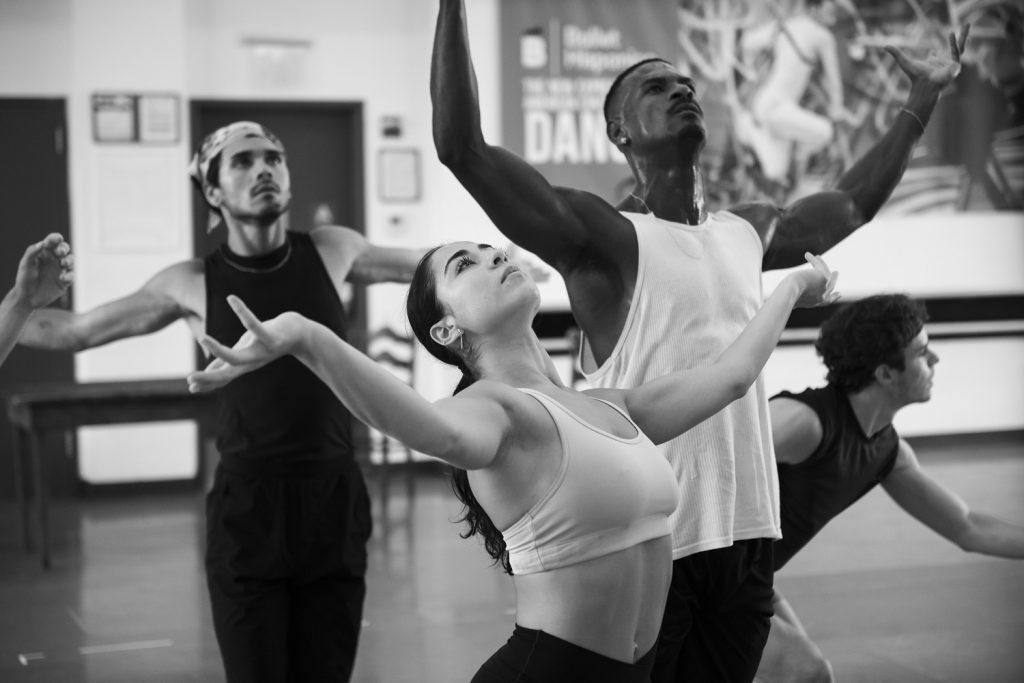
Ballet Hispánico – Company Dancers l-r: Omar Rivéra, Fatima Andere, Leonardo Brito, Dylan Dias McIntyre – Photo by Paula Lobo
JD: So tell me about Sancocho (soup). How did that concept come about when you began working?
EV: That was always there. Sancocho is a soup. Everywhere the slaves landed in Latin America there’s a type of Sancocho. They’re ingredients…they used different tubers from Africa with Spanish potatoes …different kinds of ingredients. Sancocho means [to me] the intersections of cultures. It really is about the intersection of cultures and I thought it was a great word to use because we’re so food oriented. I am making a Sancocho with this piece.
JD: So you’re the cook, putting the ingredients together.
EV: Right! I’m the cook.
JD: In capturing the Latin American experience, in the press it said, “the totality and diversity, through intersectionality with other diaspora.” Could you allow our audience and me to understand exactly what you think of that?
EV: As I stated earlier, I love opening windows or turning on the lights on understanding. The totality is the beauty of what we’ve come to, but also the pain. You will see some pain, you’ll see someone not treated correctly. Of course, in a beautiful way, but still there is the tug, and this is the beautiful thing about dance. You can really stretch the ideas of how people relate to each other and the nuances of the movement, touch and expression.
JD: Thank you for clarifying. Next is the costuming…do you bring period costuming into this or is it newly designed?
EV: It is a very nondescript costume. I didn’t want to bring period into this. I felt that I also wanted to bring a little bit of… this is happening today. We’re really just learning about Juan de Pareja, who was prolific. He started painting and a lot of people owned his work. There are paintings of his still in people’s home. So we’re invisibilized, because we’re not the descendants of Diego Velasquez or Caravaggio, or this or that. So I thought I needed to bring it to something a bit more contemporary in form. Period tends to drag you into “It has to be a certain narrative.” I want it to be a pure narrative.
JD: I understand. So my last question; People say that you’re a catalyst for new dialogues about what it means to be an American. How would you restate that in your own words?
EV: What I try to do. I want the work to be a catalyst for all of us to open a dialogue about what it means to be American. I think, with all its problems, I am thrilled to be an American citizen, and I value some of those values that we work on. And if we can just continue to create work, art, conversations about who I am… then someone else can find the strength to say, Well, this is who I am, and when an audience sees a work, they can start the beginnings of… well, why was that? Why is that Hispanic or Latino, or this? And who are these people?
We are failing in so many ways in our education system today that I feel the arts have a very significant role to play in opening those doors so people can truly understand not only who they are but who their communities are, and how they intersect.
JD: Yes, vital for today’s understanding. So in closing, is there anything you’d like to bring out before we end?
EV: Yes, and that’s the dancers. I think there’s something to be said. ….I think we’re so focused now on the individual. The individual arts…the voice, my voice. I’m a little worried that we’re forgetting what it means to work as an ensemble and how beautiful that is. And what it means not to be a dictator but to be an artist working with other artists in order to come to a vision. And these dancers are my dancers. They rely on me for so much…but I rely on them for their artistry. That relationship, when it’s good, is easy. There’s chemistry to make work, and so you can rely… bring alive a lot of everything we’ve talked about. It really comes out in such a way because of the understanding of what an ensemble truly is. All of their voices, yes, your voices are very important, but it’s not going to supersede all our voices coming together.
JD: Yes, so beautifully said… It truly has been a joy to speak to you. I want to thank you for taking time out of your busy schedule. You and your work are truly an inspiration for all of us. Thank you so much Eduardo.
EV: You are so welcome.
To view paintings by Juan de Pareja that were mentioned in this interview, please click HERE.
To learn more about Ballet Hispánico, please visit their website.
Written by Joanne DiVito for LA Dance Chronicle.
Featured image: Ballet Hispánico – Company Dancers l-r: Dylan Dias McIntyre, Leonardo Brito, Fatima Andere, Amanda del Valle – Photo by Paula Lobo

